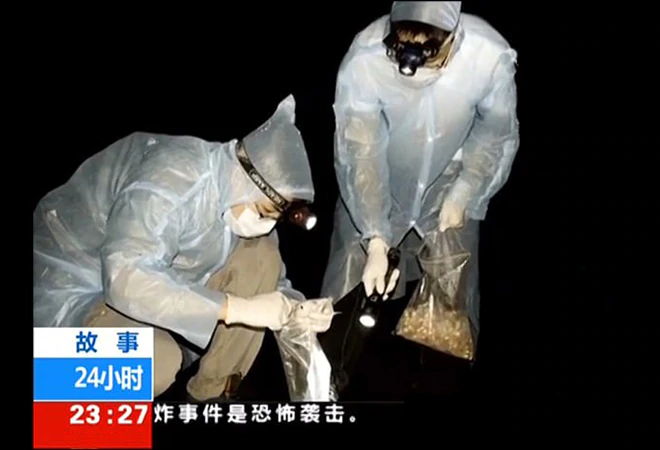
COVID-19:中国武漢ウイルス研究所の内部映像:コウモリ飼育(動画):
COVID-19:Internal image of Wuhan Inst of Veterinary Med:Bat breeding:
COVID-19:中国武汉兽医研究所内部图像:蝙蝠繁殖
豪メディア:
スカイニュース・オーストラリア:新たに、中国科学院武漢ウイルス研究所の内部映像を入手した。
映像には、研究所で生きたコウモリが飼育されている様子がある。
WHOの専門家:
WHOの専門家が、現地調査に参加した。
調査員のピーター・ダザック氏:
「今まで、武漢研究所でコウモリが飼育されていること」について、「陰謀論」と主張して否定してきた。
また、昨年12月ツイッター上で、「武漢研究所に送られたコウモリはいなかった」と投稿している。
今年6月これまでの発言を否定:
ダザック氏は今年6月初め、これまでの主張を後退させた。
武漢ウイルス研究所はコウモリを飼育していた可能性があると示した。
なぜ、これまでの発言を否定する行動に出たのか?
それは5月末、「バイデン米国大統領が、情報機関にコロナ発生源の再調査を命じた結果」である。
今までのウソが、重荷になってきたと見るほかない。
豪メディア:
スカイニュース・オーストラリア:(6月14日付)
「武漢研究所で、生きたコウモリが飼育されている様子の映像」を入手した。
中国科学院:
2017年5月、中国でバイオセーフティーレベル4実験室(P4実験室)が稼働した。
武漢実験室で働く科学者のインタビュー映像を公開した。
この映像の中:
武漢ウイルス研究所では、コウモリがゲージ内で飼育されている。
1人の研究者が餌として虫をコウモリに与えていた。
今回公開された映像:
2017年5月に武漢ウイルス研究所で、コウモリをゲージで飼っている状態である。
これとは別に、「すでに2017年12月29日に中国で放映された映像」が、再公開されている。
研究室の中で一般的な衣類を着ている。
頭に保護具をつけていない姿も映像に映っていた。
これら2つの公開された映像:
「武漢ウイルス研究所でコウモリを実験していたこと」は、疑いない事実である。
勝又壽良のワールドビュー
Wuhan bat video shows much of pandemic origin information was ‘Chinese disinformation’
15/06/2021
Sky News
host Sharri Marksonsays exclusive footage she revealed which proves live bats were kept at the Wuhan Institute of Virology
shows much of what the world has been told about the origin of the pandemic was “Chinese disinformation”.
Ms Markson told Fox News in the interview that Beijing’s disinformation
was then “propagated” by many who were “compromised”.
Ms Markson scorched the WHO team which visited Wuhan earlier this year to investigate the origin of the pandemic.
“People like Peter Daszak insisted that it was a conspiracy theory – he used the term in a tweet from December 2020 – that it was a conspiracy theory to say that there were bats in the lab,” she said.
“He’s an official WHO, World Health Organisation, investigator who went into Wuhan to supposedly investigate the origins of the virus earlier this year and it was completely false.
Ms Markson said
the WHO team failed to even ask what happened to a colossal database of coronaviruses at the lab.
“They didn’t ask if there were bats at the laboratory, they didn’t ask where the virus database was, this is such a crucial thing, the virus database with some 15,000 or 17,000 bat samples suddenly disappeared from the internet in September 2019 just prior to the outbreak of COVID-19,” she said.